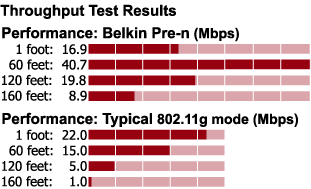Friday 22 September, 2017, 09:12 - 5G, Spectrum Management, Much Ado About Nothing
Posted by Administrator
Posted by Administrator
 Whilst much of the world is yet to experience the joy of 4G (LTE) mobile technology, work is ongoing in a variety of prestigious international bodies to put the finishing touches to the specifications for the next generation of mobile technology: 5G. Everybody knows that 4G stands for GGGG, or the stuttering noise you get when buffering a video, but what are the five G's? Simple, it's Girls, Goals, Gambling, Gaming and videos of Grimalkins, which are the cornerstones upon which mobile technologies aim to make their fortune.
Whilst much of the world is yet to experience the joy of 4G (LTE) mobile technology, work is ongoing in a variety of prestigious international bodies to put the finishing touches to the specifications for the next generation of mobile technology: 5G. Everybody knows that 4G stands for GGGG, or the stuttering noise you get when buffering a video, but what are the five G's? Simple, it's Girls, Goals, Gambling, Gaming and videos of Grimalkins, which are the cornerstones upon which mobile technologies aim to make their fortune. Slightly more seriously though, oodles is already beginning to be written about what 5G will deliver, which includes a range of features such as:
- Blazing hot, super, ultra, mega-fast broadband internet.
- Ubiquitous, go-everywhere, global, universal coverage (even in those hard to get at areas such as behind the sofa).
- Instantaneous, low-latency, tactile, real-time connectivity.
- Extremely high reliability, such that the network will only be down for 14 seconds per millennium, which together with low-latency mentioned above, is termed Ultra-Reliable Low Latency Communications (URLLC).
- Capacity to connect thousands of billions of machines (such as coke vending machines and tumble dryers) known as Massive Machine Type Communication (MTC).
- Power consumption so low that batteries only need re-charging once in every 4 years and base stations can run on one lemon per month.
- World peace and an end to global poverty and disease (this might be made up).
5G is being touted as the 'mobile technology to end all mobile technologies' and as a panacea for all ailments. This miraculous technology will provide what some have termed an 'always sufficient connection' which gives the impression of infinite bandwidth - yes, infinite.

- Mobile subscriber numbers have levelled off and average revenue per user (ARPU) is in gentle decline.
- The 5G vision has not been coupled with a business case. The business reality is that there is no new money.
- The business case for the 'jewel in the crown' of 5G � its millimeter Wave (mmWave) solution � makes little sense.
- Regulators and the ITU should not focus on spectrum for 5G - instead they should ensure that spectrum is available for each component [e.g. broadband, critical communications and IoT].
- Academics should have a stronger links to business departments in universities to ensure that technical breakthroughs are actually valuable.
- Large players (e.g. Ericsson, Nokia, Qualcomm, Huawei, Cisco and Google) should stop believing that the future is all about Gbit/s data rates.
- Governments should focus on deployment, applications and over-the-top (OTT) services not just spectrum.
 What is odd about both sides of the argument, is that many of the so-called advantages of 5G can almost certainly be delivered by 4G (LTE), especially by the forthcoming super-4G variant known as LTE-Advanced-PRO (3GPP LTE Release 13 and 14) - often termed 4.9G. All that 5G really brings is an explosion in the number of cell sites (which could occur using 4G) and technologies and techniques to allow access to new mmWave spectrum above 24 GHz which, according to Verizon may not be great for mobile services anyway:
What is odd about both sides of the argument, is that many of the so-called advantages of 5G can almost certainly be delivered by 4G (LTE), especially by the forthcoming super-4G variant known as LTE-Advanced-PRO (3GPP LTE Release 13 and 14) - often termed 4.9G. All that 5G really brings is an explosion in the number of cell sites (which could occur using 4G) and technologies and techniques to allow access to new mmWave spectrum above 24 GHz which, according to Verizon may not be great for mobile services anyway:Delivering mmWave broadband connectivity in non-line-of-sight environments, such as suburban and urban areas, is extremely problematic over the last quarter mile, because of foliage and solid constructions.
The European Commission believes that 5G is important. Its 5G Action Plan encourages each and every Member State to have a 5G service in at least one city in their country by 2020. Whether this could be delivered using 4.9G to the satisfaction of the Commission is not clear but Ericsson's definition of a 5G subscription in its Mobility Report is:
a device capable of supporting LTE Evolved or NX, connected to a 5G-enabled network, supporting new use cases
This is effectively saying that 4.9G LTE-Advanced-PRO connections would be considered as 5G subscriptions.
The reality is that the real 5G specifications will not be completed until 2020, hence any service delivered before that date can be a 'pre-5G' service at best - or maybe 4.9G. Plans for 5G services in each EU Member state, at the Winter Olympic Games in Korea in 2018 and the Tokyo Olympic Games in 2020 can only possibly fall into the pre-5G category as there will be no agreed 5G standard by these dates.
That being said, there was a time when the World was awash with 'pre-N' internet routers, which were built before the relevant standard (IEEE 802.11n) was completed. The issue with such pre-standardisation products is generally one of interoperability. Each manufacture would have had to have implemented a variation of the standard as they thought it would be finally ratified and these may have been different. Thus whilst a pre-N Netgear router may have worked with a pre-N Netgear WiFi dongle, it wasn't guaranteed to work with a TP-Link, Belkin or a Linksys one.
 For WiFi, that's probably not such a big problem, not least as if the 'N' connection failed, the router and dongle could fall back to an agreed, but less whizzy standard such as 802.11g and thus whilst the benefits of the newer standard wouldn't be realised, the WiFi would still work.
For WiFi, that's probably not such a big problem, not least as if the 'N' connection failed, the router and dongle could fall back to an agreed, but less whizzy standard such as 802.11g and thus whilst the benefits of the newer standard wouldn't be realised, the WiFi would still work. This may be what happens with the pre-5G mobile networks. Japan, for example, has a number of domestic mobile phone manufacturers (e.g. Sony, Sharp, Panasonic) who could agree to make pre-5G phones to whichever standard the Japanese mobile operators chose to roll-out. But for anyone else visiting the country (e.g. for the 2020 Olympic Games) with phones made by other manufacturers, they would just fall back to 4G and not enjoy the benefits of 5G. In such a way, Japan could claim to be offering a 5G service, but it would not be one that was internationally compatible.
So whilst 5G may yet save the world, it is unlikely to do so by 2020 unless you happen to live in a country which has its own mobile manufacturers, live in one of the minute areas where coverage will exist, happen to be there on a day when the 5G service is actually working, and have bought a locally produced 5G phone (or have been provided with one as a guinea pig to test the service). For the rest of us, its going to be more like 2023 or 2025 before real 5G services begin to make a difference to our daily lives and the (perfectly adequate) 4G service we already enjoy will, for now, have to be largely sufficient (though this doesn't make such a compelling strap-line for mobile operators' marketing departments).

add comment
( 480 views )
| permalink
| related link
| 



 ( 3 / 2467 )
( 3 / 2467 )




 ( 3 / 2467 )
( 3 / 2467 )

